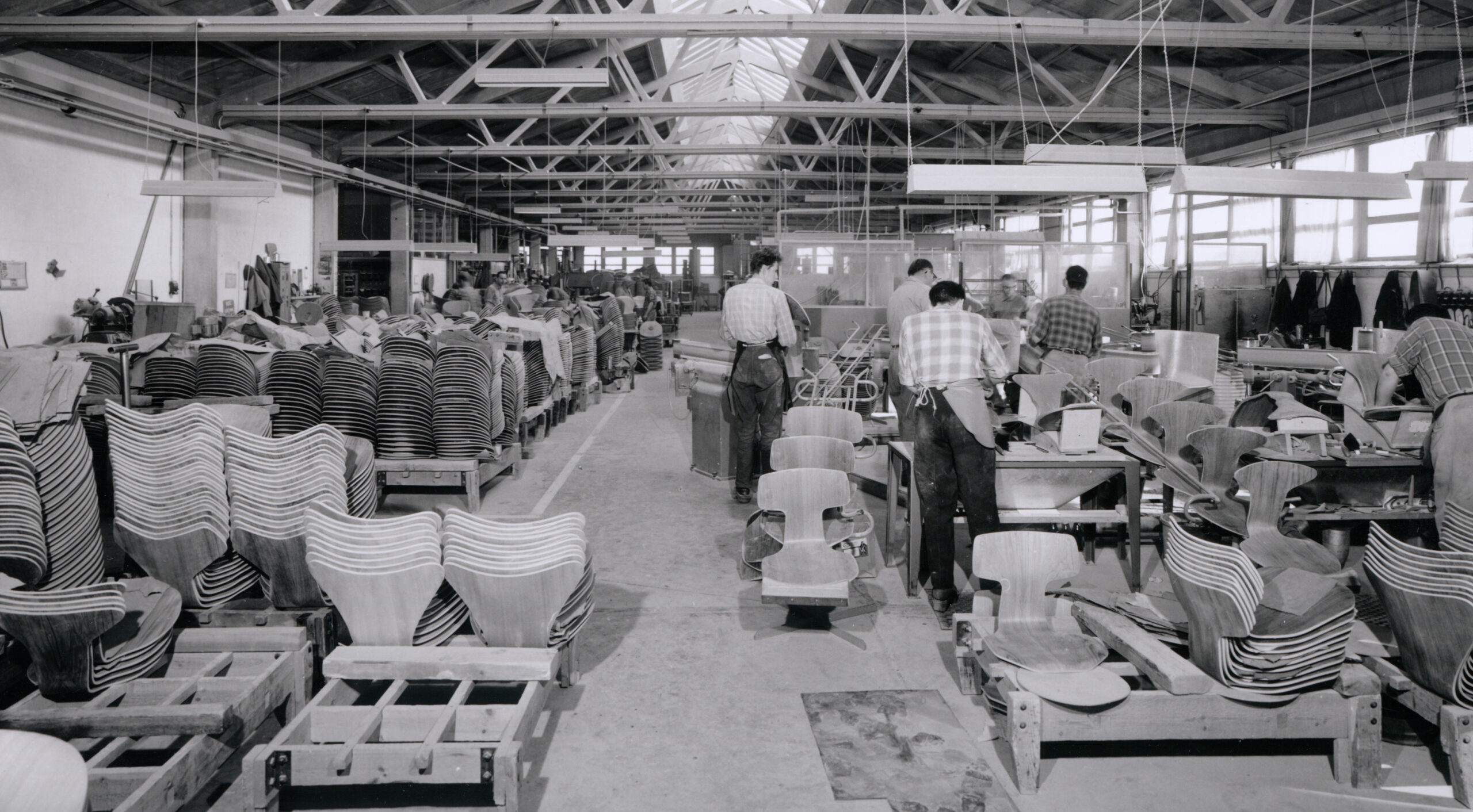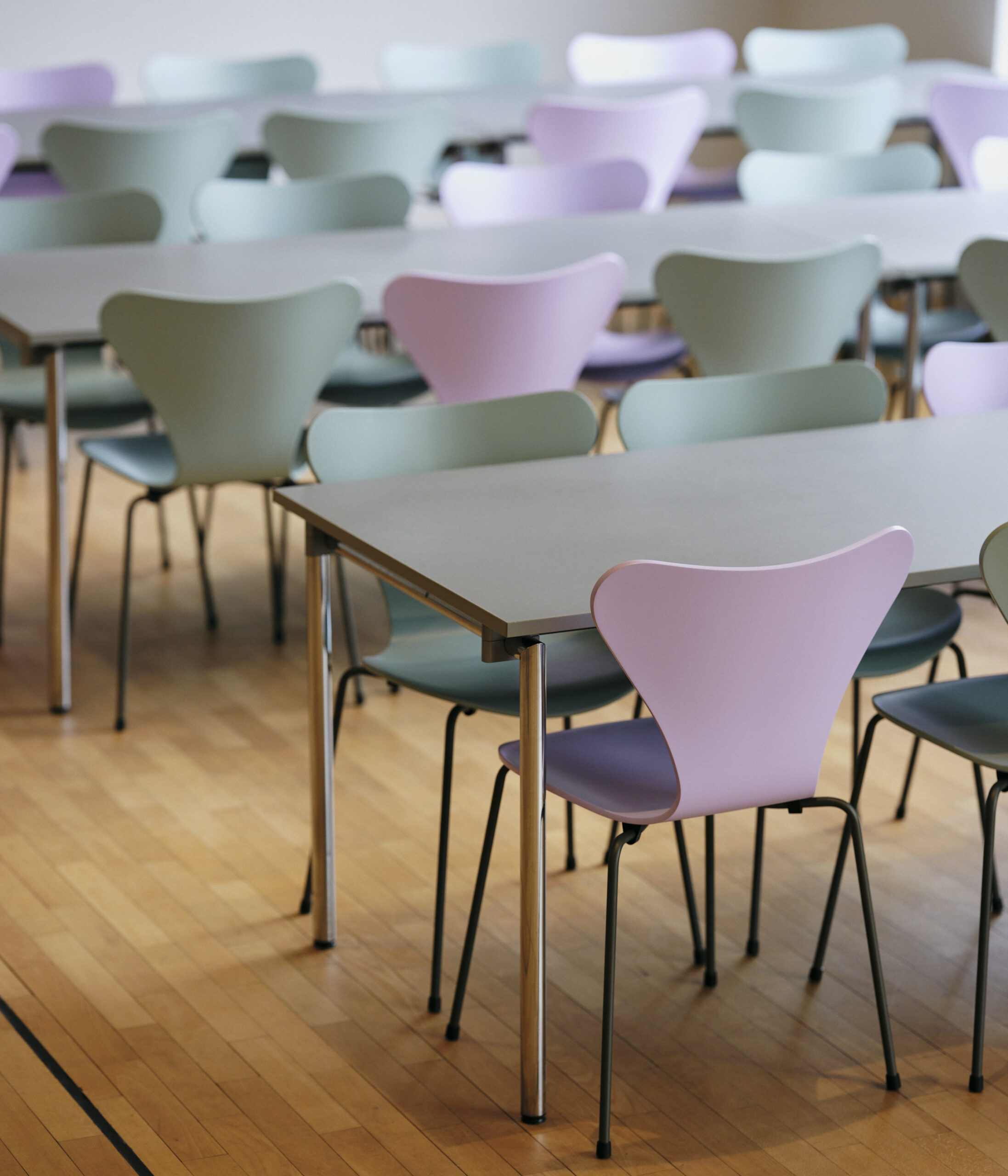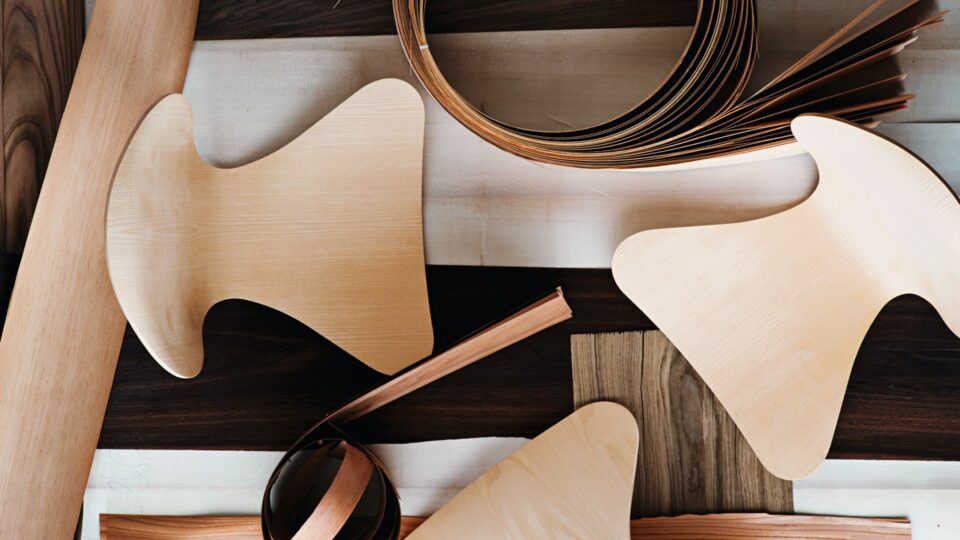While sustainability may be on everyone’s lips at Danish design company Fritz Hansen, it’s about more than materials – it’s about making enduring products you’ll want to keep forever. Nicola Capper finds out more.
Published:
12.05.2025
Writer:
Nicola Capper
As I set foot inside Fritz Hansen’s headquarters, just a 30-minute drive north of central Copenhagen, I can’t help but feel an overwhelming sense of hygge. Maybe it’s the warmth of the candles that glow from the reception desk, the intoxicating smell of wood in the air, or just the sheer amount of design history that seeps out of every perfectly-rendered wall. Either way, this the nearest I get to a religious experience.
The thing is, in the world of design, it’s rare for companies to survive for decades and even fewer that can count their legacy in triple digits, but Fritz Hansen is one of those names. For over 150 years this furniture, lighting and accessories brand has not only been producing extraordinary designs by legendary luminaries such as Kaare Klint, Hans J. Wegner and Poul Kjærholm, but it’s continued to collaborate with a plethora of contemporary pioneers too, including Jaime Hayon, Bjarke Ingels and Cecilie Manz.
“The story of Fritz Hansen begins back in 1872, where Fritz Hansen himself, an enterprising cabinet maker, started a workshop,” Christian Andresen, creative experience director at Fritz Hansen tells me, as we start a tour of its extensive design hall together. “And, following commissions for some of the most important projects in the country at the time – like the Danish Parliament and Supreme Court at Christiansburg Palace, the University Library and Copenhagen City Hall – he went on to build a business that would ride the many waves of change that followed.
“These first 50 years was a period of enormous economic growth and industrialisation here in Denmark, just as it was throughout Europe and the UK. What Fritz and, following that, his son Christian, established during this time was a strong belief that industrially produced products could be both beautiful as well as crafted to the highest standard,” Christian adds.
“Fritz Hansen also thought heavily about its supply chain from the outset too. If you manufacture wood, what do you do? You buy a forest of course! And that’s exactly what they did. In fact, it’s the old beech forest that surrounds us, right here in Allerød,” he reveals. “Back in 1896 however, this site housed a sawmill, with the lumber coming straight in to be cut into manageable sizes. It was also conveniently placed on the second stop of Denmark’s first railroad between Copenhagen and the northern part of Zealand, giving Fritz Hansen direct transportation links into the city, instead of needing horses.”
Yet despite this incredible start and the ingenious forward-thinking of the founding family, it would be one designer in particular that would go on to shape the Fritz Hansen company into what we know today, Arne Jacobsen.
Fondly referred to as the ‘grandfather of modern Danish design’, by the 1940s Jacobsen was already well known for his striking architectural projects and distinctive interior designs. Yet, like many Danish Jews during the war, he headed to Sweden and, while not allowed to work while in exile, when he returned was keen to experiment with a new material Fritz Hansen had already been extensively experimenting with – moulded plywood.

“I think Arne Jacobsen was a designer and architect with a keen understanding of his time,” Christian tells me. “A visionary as well as a functionalist, he allowed himself the freedom of organic simplicity in his style, especially when he was designing furniture. By combining an industrial approach with a sculptural form, he created what we probably all want: a well-crafted and high-quality product that is also elegant and beautiful.”
So, from October 1952 – and following the unveiling of its radically new three-legged Ant Chair – Arne Jacobsen and Fritz Hansen would continue to work together for the next 20 years. Collaboratively they produced, amongst others, the instantly-recognisable Egg chair, the distinctive Swan chair and the hourglass-shaped Series 7 which, incidentally, celebrates its 70th anniversary this year.
Officially named the 3107, or ‘the sevener’, as it’s affectionally known at home in Denmark, the Series 7 was the seventh chair in Jacobsen’s plywood series and remains a best seller more than 30 years after his death.
“Since its release in 1955, the Series 7 has remained pretty much unchanged. There have only been minor tweaks made so we can measure its lifespan in decades not just years,” Christian explains. “One of our most iconic products, and with over 18 million sold to date, this chair has become a hallmark of modern Danish design.”
Made from nine layers of pressure moulded veneer, despite its slender form, the Series 7 is unbelievably strong, flexible and durable; with its discreetly mounted steel-tubed legs designed to complement the shell’s curved profile. And, because they also extend just beyond the edge of the seat, it allows them to be easily arranged in rows or stacked for storage too.
"We have created a limited-edition series called the 7:14 AM palette, with the five unique tones chosen all taking their reference from the colours found in a long Danish sunrise."
Originally released in oak, palisander, teak and black since Jacobsen himself set the first colour palette back in 1968, the Series 7 has been given timely updates from the likes of innovative Danish designer Verner Panton, artists Poul Genres and Tal R, through to the legendary Italian gallerist and editor Carla Sozzani, who joined forces with Fritz Hansen to produce a staggering 16 new shades back in 2020.
“To celebrate the Series 7 tuning 70, we will be sharing and showing its many adaptations through a trilogy of activities,” Christian tells me when I ask him what we can look forward to seeing next. “Firstly, we have created a limited-edition series called the 7:14 AM palette, with the five unique tones chosen all taking their reference from the colours found in a long Danish sunrise.
“Secondly, we will focus on industrial craftsmanship, showing that you can add details such as the hand-stitching you see on a handbag or saddle to a leather chair. And, thirdly, we are exploring, through a collaborative project with other Sevener lovers, how this iconic model can be refurbished, repaired and recrafted, so it lasts you another 70 years.”
Fritz Hansen already calculates the carbon footprint of all its products, based on the EU Product Environmental Footprint (PEF) methodology and has recently launched its ReNew programme. Aimed at both retail and commercial sections of the market, this circular initiative is designed to actively promote environmental consciousness and responsible consumption, ensuring that whatever chair you choose, it will remain in use for as long as possible.

“At Fritz Hansen we strongly believe that initiatives pointing us and others towards a conscious and sustainable approach to people and planet, are the way forward,” says Christian. “We believe that good design should last, and that quality and the ability to repair and keep is a future we will continue to work with and expand to other products in our collection.
“With the effects of this programme now seen in our business figures too, I think there is both a clear environmental and emotional value to be found in recrafting and repairing what we have. When owning a second life product the value is probably emotionally even higher – at least it is for me,” he adds.
Offering spare parts and care kits, through to upgrades and adding upholstery to existing designs, every refurbished chair is fully restored and repaired at Fritz Hansen’s headquarters before being shipped back to clients or made available for resale complete with a CO2-certifcate and renewed full ten-year warranty.
“My favourite ReNew project so far has been the refurbishment project at the Danish technology company Topsoe,” Christian reveals. “At Topsoe, the canteen at its headquarters in Lyngby was equipped with Series 7 chairs dating back to 1983. The chairs had had a long life and the emotional attachment to them were high when the company decided a rebuild and upgrade their facility. The architect and the facility manager reached out to Fritz Hansen for a refurbishment and the old chairs, which were black with a low seat height, were taken to our factory, repaired, repainted in new colours and repaired with spare parts. The CO2 footprint door to door was 45% of a new chair.”
In just a few hours at Fritz Hansen we’ve covered more than a century and a half of design history, 400 chairs, and a tour of the historical workshop. As my inspirational visit comes to an end, I ask Christian how the company’s original values still guide the business today. What, as a designer himself – as well as an employee here for over a decade – is the secret to the brand’s continued success?
“The original vision of Fritz Hansen lives on in our strategy and the way we operate, manage and look forward. Crafting timeless design and having a strong belief in quality and extraordinary products manufactured in a sustainable way is still an integral part of our core values.
“I believe our continued success lies in the appeal of our products and the way they ‘live’ in people’s homes and businesses. The life of a product is very important to us – the longer, the better. We believe that the quality and beauty of a product is what makes it last over time. To do that we need constantly to have high ambitions in design, manufacturing and allowing a product to become even more attractive. We are blessed with that in our collection.”
And on that note, it’s time for me to jump in a taxi and head to the airport for home. But just like the designs I’ve seen today; the experience of this inspirational trip will stay with me for a very long time.


